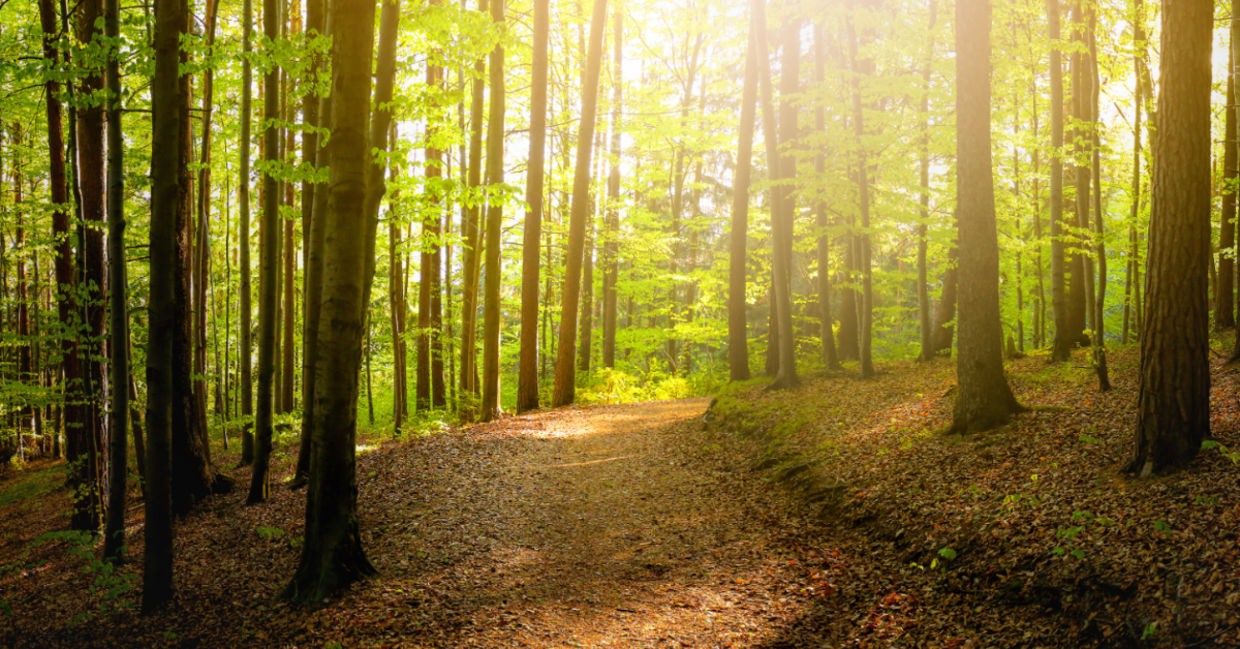
(Kim Kuperkova / Shutterstock.com)
Depleted forests are never out of the headlines for long, but did you know that several tech-led techniques are being employed to boost reforestation and bring these lungs of nature, a key source of oxygen in the atmosphere, back to life?
Nature news portal, Mongabay, recently devoted a mini-series to exploring the newest technological solutions that support worldwide reforestation efforts, but not without pointing out that reforestation efforts are often flawed.
Reforestation has been challenging
This Mongabay review speaks frankly about the real-world flaws of labor-intensive, reforestation endeavors, despite the green rallying cry of “Plant a tree!” Disappointments can be the result of poor planning leading to dismal and underreported tree planting outcomes. Perhaps trees were planted that didn’t suit the chosen habitats, or planners didn’t consider that rewilding animals or soil treatments, for example, can optimize the success of revitalizing degraded land.
Failure can also come from not grasping that what’s called a natural process of succession, when one community of species paves the way for another, needs to be factored in. Bare rock, for instance, might be colonized by mosses which create the soil that enables grasses to flourish and that over time may be replaced by shrubs and trees. Shortfalls in monitoring and long-term community support, meanwhile, have also led to the neglect and even the clearance of newly-planted trees.
This awareness that tree-planting may not always be a silver bullet solutionreported the NYT. When done badly, for instance when the wrong trees are planted in the wrong place, reforestation can speed up extinctions and make nature less resilient.
According to Mongabay the challengeis to match rising demand for restoration with ecologically sound, scalable reforestation methods. These are solutions that can better address the technical, environmental and social challenges that have prevented tree planting from living up to its promise.
Tech is stepping up to help
“Scale is the biggest challenge to restoration and reforestation projects worldwide,” according to Charlotte Mills, chief ecologist at AirSeed Technologies in Australia told NYT. The good news is that new tech solutions can help make tree planting at scale easier, faster and more successful. Enterprises such as biotech company Spades, are focused on enhancing tree survival through large-scale reforestation projects featuring built-in tech from the planning through to the monitoring stages.
Researchers have been able to harness artificial intelligence (AI) to help create computer models for better advance planning in areas such as predicting habitat suitability for particular tree species. While research labs have incorporated AI in assessing habitat suitability for over two decades, Mongabay reveals that it is only lately that the models are being applied on the ground to guide reforestation work at the planning stage by researchers at centers such as the Alliance of Bioversity International and the International Center for Tropical Agriculture (CIAT)
Meanwhile, solar-powered, seed-planting robots, capable of planting up to 600 trees in a morning, are being piloted by conservationists working in the Peruvian Amazon, details euronews. Former illegal minor and logger, Juan Julio Durland Torres, now works as a conservationist with nonprofit, Junglekeepers International. He explains that it is collaborating with Swedish robotics firm, ABB, to bolster the reforestation efforts of locals, and match the technology used by miners and loggers cutting down the rainforest.
Drones are proving to be allies in carrying out aerial seeding due to their ability to drop seeds in precise locations, especially at remote and difficult-to-access sites. One company operating them is Mast Reforestation, a Seattle-based program working on North America’s conifer forests ravaged by logging, insects and wildfire. Sometimes, these seeds come in prepackaged pods containing nutrients, to give seeds the best start in life, Mongabay reveals. AirSeed Technologies aims to drop 100 million seed pods a year by 2024. Its projects include the restoration of koala habitats in Australia lost to bushfires.
The Globe and Mail reports on how Canadian start-up, Flash Forest, which has a motto of “reforestation, reimagined,” uses drones that fire seed pods at high velocity into the soil. It has an ambitious remit going beyond changing forestry to mitigate climate change and preserve biodiversity.
While ongoing monitoring and responsive support for the seedlings are crucial, sending people out on field monitoring to assess the health of new trees which take years to mature, is time consuming and costly. Here, satellites are stepping up to provide large-scale data sets over time on how huge reforested sites are faring. Food Giant, Nestle, announced in April 2023 that it is working to monitor its reforestation efforts long-term using satellites.
The most recent satellites feature high-resolution cameras and laser scanners that give researchers a clearer picture of growing forests.
Drones fitted with sensors can also gather more specific data when flown over replanted forests, giving researchers a bird's-eye view. Mongabay suggests that the ultimate solution to forest monitoring may come from sensors attached to trees, which promise observation and data gathering in real time. This is already happening using QR codes, GPS trackers and distributed sensor networks attached to tree trunks.
YOU MIGHT ALSO LIKE:
Food Forests are Dotting American Cities
How to Become a Conscious Tourist
Discover an Edible Food Packaging Breakthrough!







